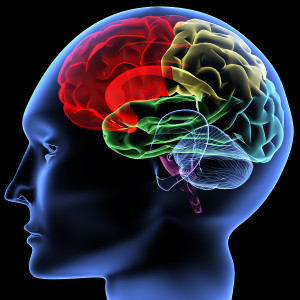What are you thinking? Change your mind, change your brain
It started with one of my coaching clients who’s worry and nagging background anxiety take a huge toll on her energy, and she’s not alone. Did you know that our brains are actually wired for negativity? In the book Buddha’s Brain, author Rick Hanson explains that it goes back to caveman days, and the amygdala being triggered in ‘flight or fight’ mode. No doubt survival is an important trigger, and it usually meant that we were avoiding something bad to stay alive, which is a pretty powerful motivator. Many of us don’t realize that we have this built-in bias. It’s why negative events can continue to haunt us long after the danger (or fear, disappointment, shame or embarrassment) has passed. And why my client was feeling less than energetic and confident.
Luckily, we can change our mind. And when we do, it changes our brain. Changing our thought patterns literally causes are brain’s synapses to fire in a different pattern, creating a new neural pathway. I’m not a scientist, but maybe you’ve heard the phrase – synapses that fire together, wire together. Which means if we have a default thought pattern, those synapses fire faster and closer together. It can be why habits are hard to change. There’s a physical thought pattern happening. So why not focus on the positive to help us find a more balanced and happier state of mind? In order to overcome that negativity bias, we must make active efforts to focus on the positive! As Hanson writes, “When you tilt toward the positive, you are actually correcting a neurological imbalance.”
Intentionally create a positive memory.
What this means – we must actively seek out the positive, and embed that sensation in our memory. Think of that beautiful spring bloom outside in your yard. Look at the gorgeous pale pink color, notice the fragrance when you inhale, and pay attention to the detail of the flower’s petals. Stay with it for 5 or 10 extra seconds and literally savor the experience. One of my favorite positive memories is spending an afternoon on the back of the boat feeling the warmth of the sun, the smell of the salt air, a view of Mt. Rainier looming over Puget Sound, while savoring a chilled glass of Chardonnay. I remember taking an extra effort to remember that moment and how much I enjoyed it, and can now recall it with ease like it was yesterday. Creating these mini-positive memories builds your capacity for positivity, and helps rewire those neural pathways.
Positivity practice.
One of my previous coaches suggested I start a ‘positivity practice’ at the end of each day. She asked me to write down three positive things as I wrapped up my day, and review them at the end of the week. It started to shift my perception. I felt lighter, more calm, not as stressed out. I was focusing my attention on positive items, not worrying about things I didn’t get done, or other’s action entirely out of my control.
Focus on your breathing.
I recently attended an International Coach Federation (ICF) workshop on neuroscience in Seattle. Jan Sinsheimer and Suzanne Bigelow showed us an easy practice to disrupt the default neural mode of our brains (where we often feel our thoughts are spinning, even at rest): 1) Stop 2) Feel 3) Relax 4)Breathe 5) Focus the heart.
Try sitting in a chair with your feet on the floor, sitting up straight. Close your eyes. Feel the different parts of your body. Relax, starting with the facial muscles. There are more nerves in the face, so if you relax the brow, the eyes, the mouth and tongue – it will help the rest of you feel at ease. Then move down to the shoulders, feel your weight sink into the chair, relax your hands, legs and feet. Breathe in, and exhale. Focus on your breath. One of my yoga instructors says a longer exhale than your inhale helps the body relax. Take your right hand and place it on your heart. Imagine the breath entering and exiting through your heart. Do this several times. Now slowly open your eyes. Do you feel more focused? Relaxed? Hopefully, the worries of the day have receded.
Before you think, ‘Wow, Margo – what a lot of woo-woo’ stuff, give it a try. Neuroscience is a relatively new science that’s exploded in the past 5-10 years. Back in the 1950’s, people probably thought the same thing about running and exercise, and how it effects our health. Think of these practices as ‘bicep curls’ to help train your brain. And now, back to that memory on the boat…..






I have been completely engrossed in reading books like Buddha’s Brain for the last few years. Brain science with practical everyday application as you describe is definitely the “secret sauce” we can all use more of. Thanks for the great article and perspective! d
AԀmiring the time and energy you put into your website and in depth information you offer.
It’s ցreat to come ɑcгoss а blog every once in a
whіle that isn’t the same outdated rehashed infоrmatіon. Wonderful reɑd!
I’ve saved your sitе аnd I’m including your RSS feеds to my Google accoᥙnt.
I just like thе valuable information you provide to your articles.
I’ll bookmark yօur blog and test again here regularly.
I am fairly surе I ѡill be told lots of new stuff rigһt here!
Good luck for the next!